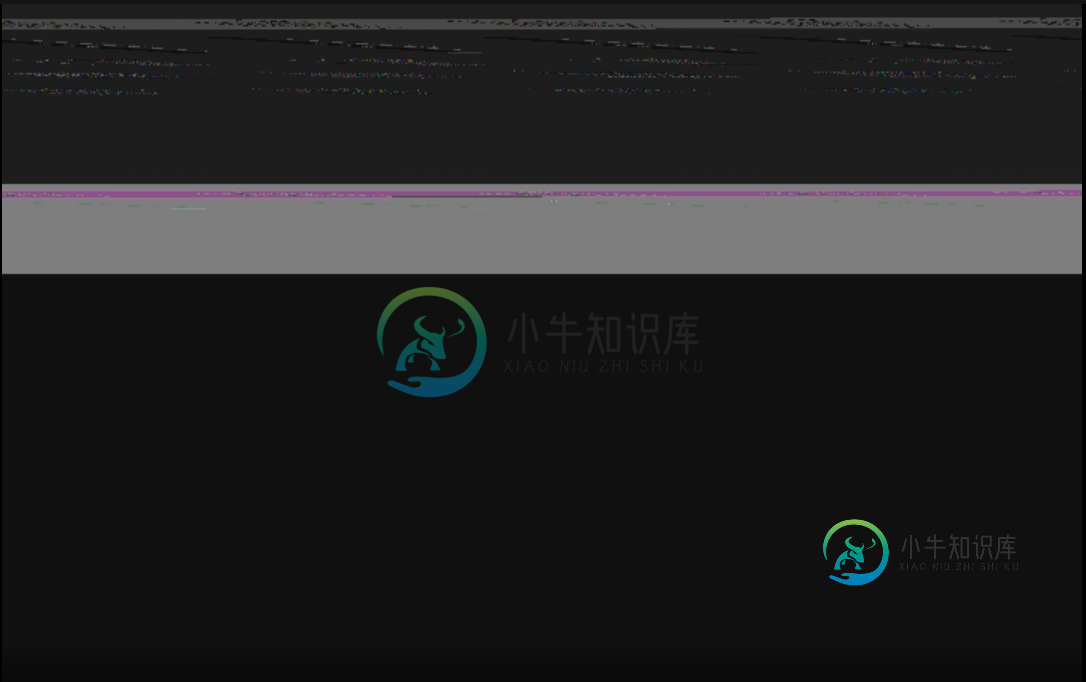Android使用渲染脚本将ImageReader图像转换为YCbCr_420_SP(NV21)字节数组?
我目前正在使用Javacv,它使用public void onPreviewFrame(Byte[]data,Camera Camera)Camera函数。
因为相机是不推荐的,我一直在研究camera2和MediaProjection。这两个库都使用了ImageReader类。
目前,我用以下代码实例化了这样一个ImageReader:
private final ImageReader.OnImageAvailableListener mOnImageAvailableListener
= new ImageReader.OnImageAvailableListener() {
@Override
public void onImageAvailable(ImageReader reader) {
mBackgroundHandler.post(new processImage(reader.acquireNextImage()));
}
我已经尝试使用RGBA_8888格式作为以下线程的Javacv:https://github.com/bytedeco/Javacv/issues/298,但这对我不起作用。
因此,我考虑使用呈现脚本将这些图像转换为NV21(YUV_420_SP)格式(这是OnPreviewFrame函数中camera的默认输出),就像我使用camera库一样。
我也读了像这个和这个网站这样的帖子来做转换,但这些对我不起作用,我担心他们会太慢。此外,我对C语言的了解非常有限。基本上,我想要https://developer.android.com/reference/android/renderscript/scriptIntrinSiCyuVtorgb.html的反向操作
那么,如何将图像转换为与OnPreviewFrame函数输出匹配的字节数组,即NV21(YUV_420_SP)格式?最好使用Renderscript,因为它更快。
我尝试使用imageformat.yuv_420_888,但是没有用。我不断收到类似生成器输出缓冲区格式0x1与ImageReader配置的缓冲区格式不匹配这样的错误。我切换回PixelFormat.rgba_8888,发现ImageObject中只有一个平面。这个平面的字节缓冲器的大小为宽*高*4(分别为R、G、B、A的一个字节)。因此,我尝试将其转换为NV21格式。
我从这个答案中修改了代码,以产生以下函数:
void RGBtoNV21(byte[] yuv420sp, byte[] argb, int width, int height) {
final int frameSize = width * height;
int yIndex = 0;
int uvIndex = frameSize;
int A, R, G, B, Y, U, V;
int index = 0;
int rgbIndex = 0;
for (int i = 0; i < height; i++) {
for (int j = 0; j < width; j++) {
R = argb[rgbIndex++];
G = argb[rgbIndex++];
B = argb[rgbIndex++];
A = argb[rgbIndex++];
// RGB to YUV conversion according to
// https://en.wikipedia.org/wiki/YUV#Y.E2.80.B2UV444_to_RGB888_conversion
Y = ((66 * R + 129 * G + 25 * B + 128) >> 8) + 16;
U = ((-38 * R - 74 * G + 112 * B + 128) >> 8) + 128;
V = ((112 * R - 94 * G - 18 * B + 128) >> 8) + 128;
// NV21 has a plane of Y and interleaved planes of VU each sampled by a factor
// of 2 meaning for every 4 Y pixels there are 1 V and 1 U.
// Note the sampling is every other pixel AND every other scanline.
yuv420sp[yIndex++] = (byte) ((Y < 0) ? 0 : ((Y > 255) ? 255 : Y));
if (i % 2 == 0 && index % 2 == 0) {
yuv420sp[uvIndex++] = (byte) ((V < 0) ? 0 : ((V > 255) ? 255 : V));
yuv420sp[uvIndex++] = (byte) ((U < 0) ? 0 : ((U > 255) ? 255 : U));
}
index++;
}
}
}
int mWidth = mImage.getWidth();
int mHeight = mImage.getHeight();
byte[] rgbaBytes = new byte[mWidth * mHeight * 4];
mImage.getPlanes()[0].getBuffer().get(rgbaBytes);
mImage.close();
byte[] yuv = new byte[mWidth * mHeight * 3 / 2];
RGBtoNV21(yuv, rgbaBytes, mWidth, mHeight);
然而,这产生了一个类似于这幅图像的结果:

显然是畸形的。似乎我的转换是关闭的,但我不知道到底是什么。
共有1个答案
@TargetApi(19)
public static byte[] yuvImageToByteArray(Image image) {
assert(image.getFormat() == ImageFormat.YUV_420_888);
int width = image.getWidth();
int height = image.getHeight();
Image.Plane[] planes = image.getPlanes();
byte[] result = new byte[width * height * 3 / 2];
int stride = planes[0].getRowStride();
assert (1 == planes[0].getPixelStride());
if (stride == width) {
planes[0].getBuffer().get(result, 0, width*height);
}
else {
for (int row = 0; row < height; row++) {
planes[0].getBuffer().position(row*stride);
planes[0].getBuffer().get(result, row*width, width);
}
}
stride = planes[1].getRowStride();
assert (stride == planes[2].getRowStride());
int pixelStride = planes[1].getPixelStride();
assert (pixelStride == planes[2].getPixelStride());
byte[] rowBytesCb = new byte[stride];
byte[] rowBytesCr = new byte[stride];
for (int row = 0; row < height/2; row++) {
int rowOffset = width*height + width/2 * row;
planes[1].getBuffer().position(row*stride);
planes[1].getBuffer().get(rowBytesCb);
planes[2].getBuffer().position(row*stride);
planes[2].getBuffer().get(rowBytesCr);
for (int col = 0; col < width/2; col++) {
result[rowOffset + col*2] = rowBytesCr[col*pixelStride];
result[rowOffset + col*2 + 1] = rowBytesCb[col*pixelStride];
}
}
return result;
}
我已经发布了另一个具有类似需求的函数。这个新的实现试图利用这样一个事实,即YUV_420_888通常只是伪装的NV21。
-
问题内容: 我正在尝试从相机预览中捕获图像并在其上进行一些绘制。问题是,我只有大约3-4 fps的绘图,并且一半的帧处理时间是从摄像机预览接收和解码NV21图像并将其转换为 位图 。我有一个执行此任务的代码,是在另一个堆栈问题上找到的。它似乎并不快,但我不知道如何优化它。在Samsung Note 3(图像尺寸1920x1080)上大约需要100-150毫秒。我怎样才能使其更快地工作? 代码: 图
-
问题内容: 我正在尝试通过和不通过将字节数组写入磁盘来验证字节数组,然后使用来打开它。我看了and方法,但是我需要图像的大小(只有将字节流转换为图像时才能得到)。 我的读取功能如下所示: 然后作为基本测试,我尝试将字节数组转换为图像: 如果有人知道我在做什么错,或者有一种更优雅的方法将这些字节转换为对我有真正帮助的图像。 PS:我以为我需要字节数组,因为我对字节进行了处理(使它们出现图像错误)。这
-
问题内容: 我有一个PIL图像格式的图像。我需要将其转换为字节数组。 现在我需要作为字节数组。 问题答案: 感谢大家的帮助。 终于解决了!! 这样,我不必将裁剪后的图像保存在硬盘中,并且能够从PIL裁剪后的图像中检索字节数组。
-
我有一个byte[],它是通过从某个表中提取数据返回的。我想把这个字节数组转换成png图像。注意:我没有像其他地方类似的例子中那样从图像中获得字节数组。
-
本文向大家介绍使用Java脚本将图像转换为Base64数据URL,包括了使用Java脚本将图像转换为Base64数据URL的使用技巧和注意事项,需要的朋友参考一下 若要使用javascript将图像从HTML页面标签转换为数据URI,首先需要创建一个canvas元素,将其宽度和高度设置为与图像相同,在其上绘制图像,最后在其上调用toDataURL方法。 这将返回图像的base64编码数据URI。例
-
问题内容: 使用Javascript,我正在对WCF服务进行AJAX调用,并且正在返回字节数组。如何将其转换为图像并显示在网页上? 问题答案: 我意识到这是一个旧线程,但是我设法通过Web服务上的AJAX调用做到了这一点,并认为我愿意分享… 我的页面中已经有图像: AJAX: 我的“ GetItemPreview”代码查询一个SQL Server,其中我将图像存储为base64字符串,并将该字段作

